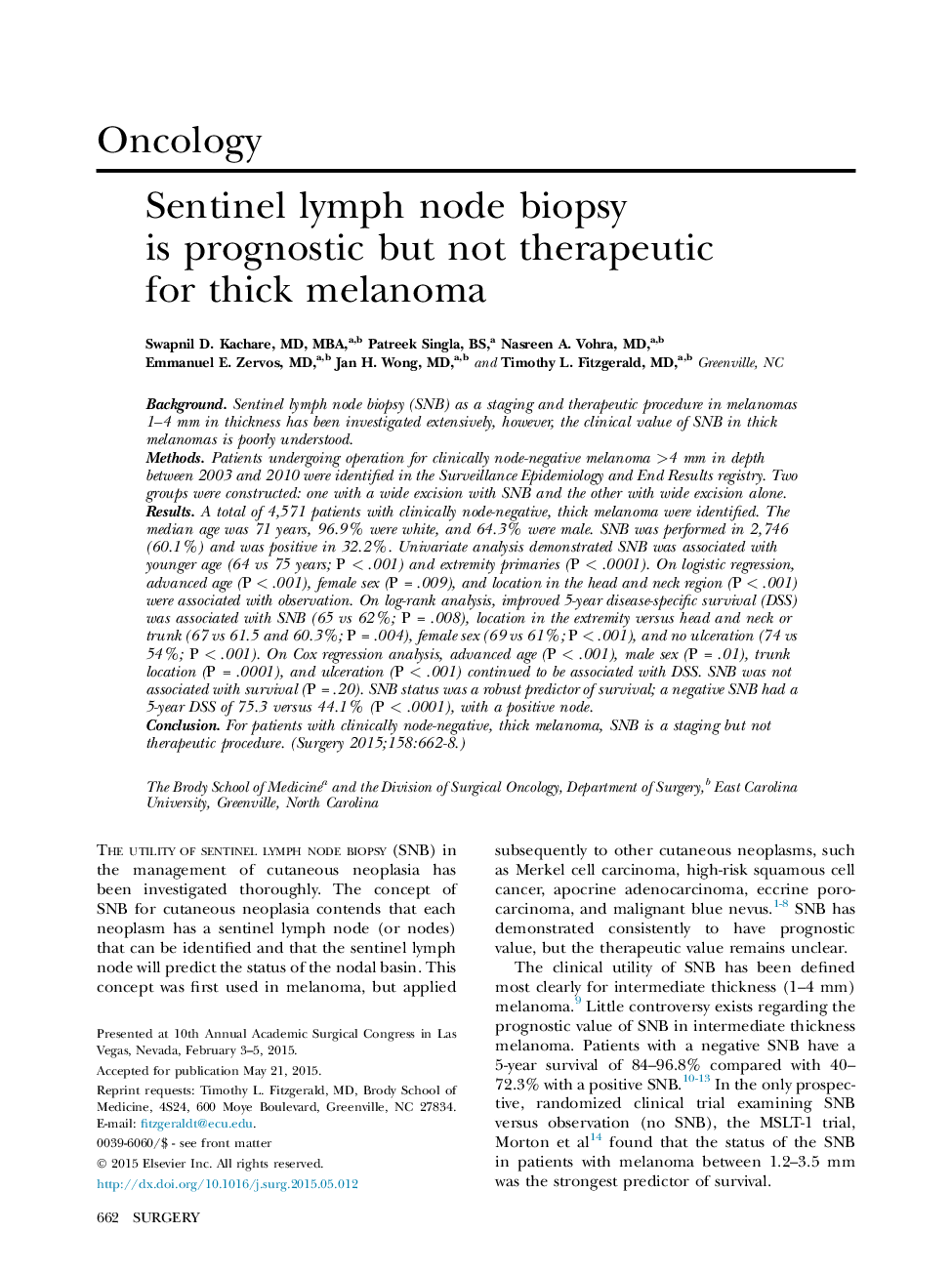| Article ID | Journal | Published Year | Pages | File Type |
|---|---|---|---|---|
| 4306693 | Surgery | 2015 | 7 Pages |
BackgroundSentinel lymph node biopsy (SNB) as a staging and therapeutic procedure in melanomas 1–4 mm in thickness has been investigated extensively, however, the clinical value of SNB in thick melanomas is poorly understood.MethodsPatients undergoing operation for clinically node-negative melanoma >4 mm in depth between 2003 and 2010 were identified in the Surveillance Epidemiology and End Results registry. Two groups were constructed: one with a wide excision with SNB and the other with wide excision alone.ResultsA total of 4,571 patients with clinically node-negative, thick melanoma were identified. The median age was 71 years, 96.9% were white, and 64.3% were male. SNB was performed in 2,746 (60.1%) and was positive in 32.2%. Univariate analysis demonstrated SNB was associated with younger age (64 vs 75 years; P < .001) and extremity primaries (P < .0001). On logistic regression, advanced age (P < .001), female sex (P = .009), and location in the head and neck region (P < .001) were associated with observation. On log-rank analysis, improved 5-year disease-specific survival (DSS) was associated with SNB (65 vs 62%; P = .008), location in the extremity versus head and neck or trunk (67 vs 61.5 and 60.3%; P = .004), female sex (69 vs 61%; P < .001), and no ulceration (74 vs 54%; P < .001). On Cox regression analysis, advanced age (P < .001), male sex (P = .01), trunk location (P = .0001), and ulceration (P < .001) continued to be associated with DSS. SNB was not associated with survival (P = .20). SNB status was a robust predictor of survival; a negative SNB had a 5-year DSS of 75.3 versus 44.1% (P < .0001), with a positive node.ConclusionFor patients with clinically node-negative, thick melanoma, SNB is a staging but not therapeutic procedure.
